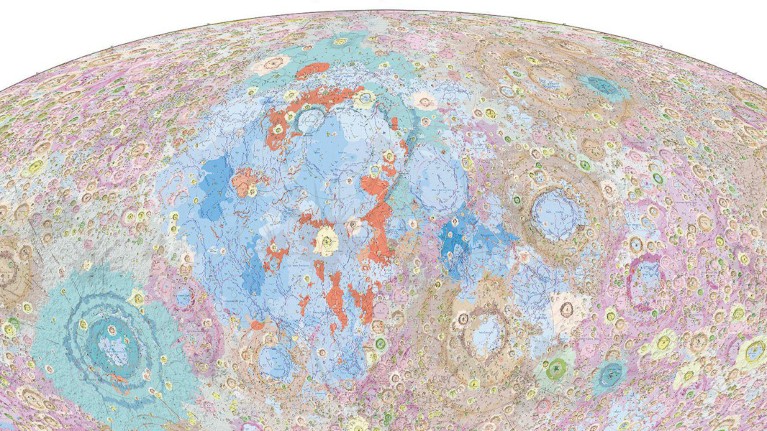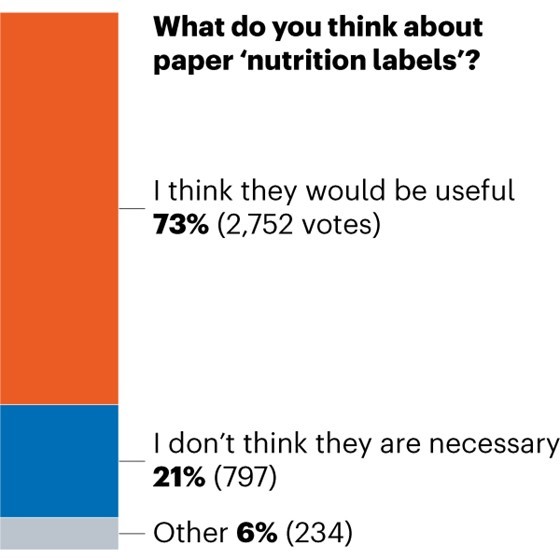Hello Nature readers, would you like to get this Briefing in your inbox free every day? Sign up here.

Credit: Chinese Academy of Sciences via Xinhua/Alamy
Most detailed Moon maps ever made
The Chinese Academy of Sciences has released the highest-resolution geological atlas of the Moon yet. The Geologic Atlas of the Lunar Globe reveals a total of 12,341 craters, 81 basins and 17 rock types, along with other basic geological information about the lunar surface. The maps were made at the unprecedented scale of 1:2,500,000. China will use the maps to support its lunar ambitions and researchers say that the maps will be beneficial to other countries as they undertake their own Moon missions.
Rat neurons repair mouse brains
Rat cells can fill in gaps in the brains of developing mice, such as missing olfactory neurons and even an entire brain region. While researchers have created other hybrid animals, such as mice with rat organs, this is the first demonstration of rat neurons becoming an essential part of controlling the mice’s behaviour.
Reference: Cell paper 1 & paper 2
Ranga Dias’s lawsuit dismissed
Superconductivity physicist Ranga Dias sued his university for allegedly violating his academic freedom and conducting a biased investigation, which found he had committed extensive scientific misconduct. A judge dismissed the lawsuit as “not ripe for judicial review” because the university, which recommended that Dias be fired, has not yet finished taking administrative action.
NIH raises pay for postdocs and PhD
The US National Institutes of Health (NIH) said it will raise the salaries of thousands of postdoctoral researchers and graduate students who receive a prestigious NIH research fellowship. The move could boost pay for other scientists as well, because academic institutions often follow guidelines set by the NIH. “This is a major step in the right direction and something that the majority will agree is widely needed to retain talent in the biomedical and academic research sectors,” says biomedical engineer Francisca Maria Acosta.
Reader poll

A group of researchers wants scientific publishers to display a ‘nutrition label’ on papers that includes facts about the journal (acceptance rate, for example) and the article (such as the number of reviewers and authors’ competing interests).
Almost three-quarters of readers who voted in our poll felt that these ‘nutrition labels’ would be useful. In terms of what should be included, “citation index is nasty, but there is some correlation with general journal quality”, says molecular cell biologist Simon Goodman.
The labels could be expanded beyond data that are already publicly available. “I want some sort of metric that captures whether the reviewers sent back a ‘Yeah looks good’ or whether they gave in-depth feedback for a paper,” says economist Alexander Smith. “I just want to know whether a paper got ‘whatever’ed’ or not.”
There were some worries that journals would try to game the system to make their numbers appear better or that the labels would unfairly disadvantage new journals that don’t yet have certain statistics.
Others felt that such labels would be unnecessary. “Not because that information is not useful”, says education researcher Pilar Gema Rodríguez Ortega, but because it implies that researchers aren’t able to make their own informed decisions on a paper’s quality.
Features & opinion
Bird flu in US cows: is the milk supply safe?
Three weeks after the announcement of the first ever outbreak of an avian influenza virus in dairy cattle, the H5N1 strain of bird flu has been detected in eight US states. On Wednesday, officials confirmed that genomic material from the virus has been detected in milk sold in shops. “The detection of viral RNA does not itself pose a health risk to consumers,” says dairy scientist Nicole Martin. “We expect to find this residual genetic material if the virus was there in the raw milk and was inactivated by pasteurization.” More evidence is needed to confirm that pasteurization kills H5N1. There are rules that milk from infected cows must be discarded, so the presence of viral material in commercially available milk might indicate that not every infected cow is being spotted and tested.
Futures: Cosmic rentals
Immortals browse the shelves of a Universe-rental shop for comedies, tragedies and other genres in the latest short story for Nature’s Futures series.
Podcast: How marsupials got their ‘wings’
Researchers have discovered the genetic region that gives sugar gliders (Petaurus breviceps) and others ‘flying’ marsupials their gliding membrane. Comparing the DNA of 14 marsupial species showed that “all glider species seem to be evolving at a very high rate in a particular region, nearby a gene called Emx2”, explains molecular biologist and study co-author Ricardo Mallarino. Sugar glider embryos developed shorter gliding membranes when the activity of that gene was decreased.
Nature Podcast | 29 min listen
Subscribe to the Nature Podcast on Apple Podcasts, Spotify or YouTube Music, or use the RSS feed.
